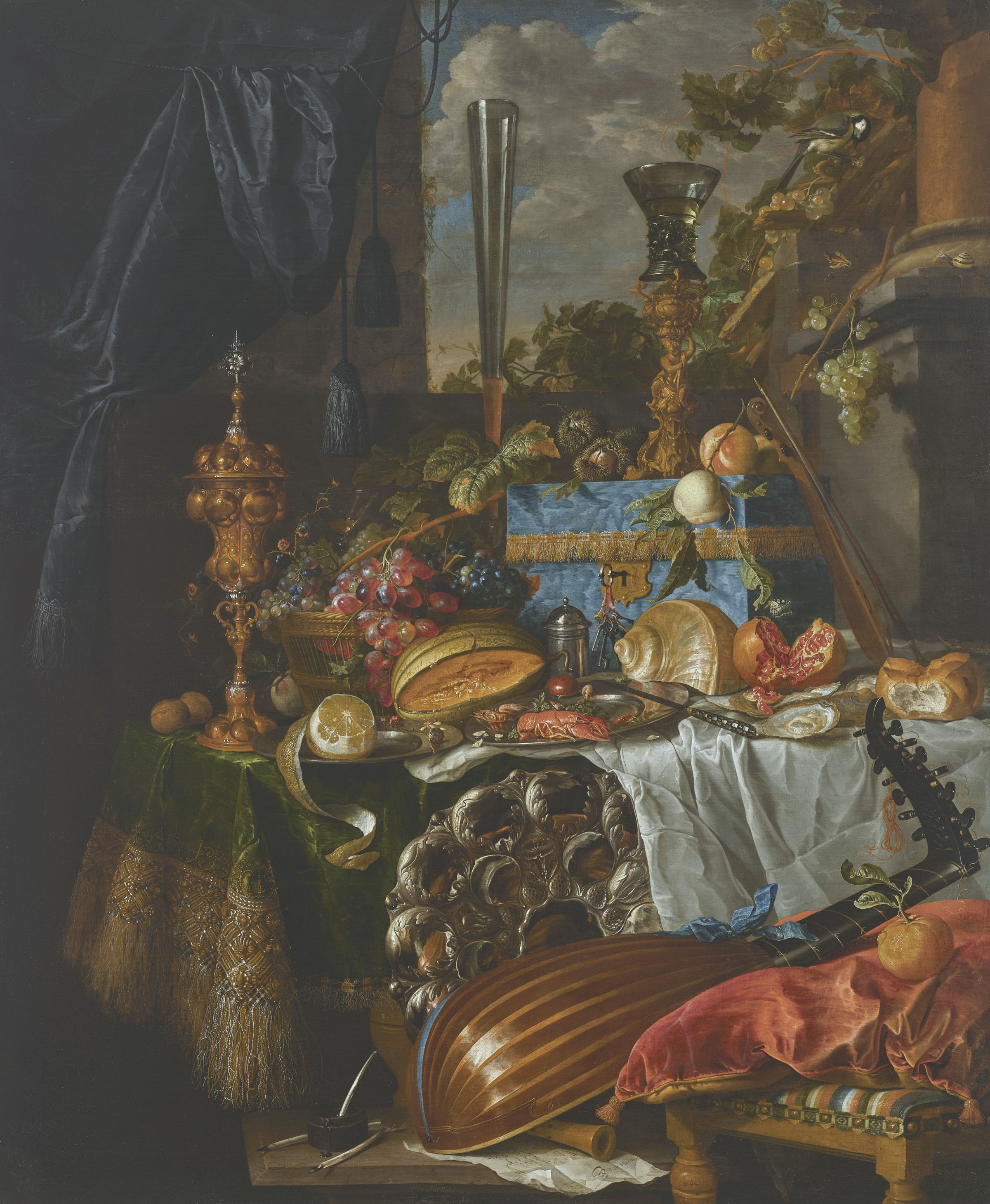Hitler's de Heem Joins Stellar Group of Getty Loans
 |
| Jan Davidsz. de Heem. A Banquet Still Life, mid 1660s. The Klesch Collection |
A spectacular Banquet Still Life by Jan Davidsz. de Heem, coveted by Adolf Hitler and recently restituted, is now on loan to the Getty Museum from the private Klesch collection.
In 1941 the Nazi state compelled Amsterdam Jewish collectors Jacob and Henriette Lierens to sell the Banquet Still Life. It was then intended for Hitler's planned Führermuseum. Recovered by the monuments men, the de Heem hung in Utrecht's Centraal Museum for decades after the war. It was returned to the Lierens family only in 2019. Christies London auctioned the painting last July for £3.14 million. The current owners, Gary and Anita Klesch, have a wide-ranging set of European paintings and have placed some on long-term loan to museums.
The de Heem heads a stellar group of painting loans now at the Getty, including the Gainsborough Going to Market (mentioned in a recent post) and pictures by Rubens, Millet, and Monet.
 |
| Thomas Gainsborough, Going to Market, Early Morning, 1773. Private collection |
 |
| Rubens, Holy Trinity (1620, Royal Museum of Fine Arts, Antwerp) and The Entombment (about 1612, Getty Museum) |
A workshop Rubens Holy Trinity from Antwerp's Royal Museum of Fine Arts now shares a wall with the Getty's The Entombment. Both are altarpieces of comparable size, built around a foreshortened Christ. As juxtaposed, they offer a teachable moment in studio v. autograph Rubens.
LACMA has lent the Getty its Millet Norman Milkmaid. It's not quite a "guest masterpiece," as other construction loans have been billed, but its heroic worker makes a fitting companion to the Getty's Man With a Hoe. With the Milkmaid in near-silhouette, and probably darker than when it left Millet's easel, it has always been a "difficult" picture at LACMA. Under the Getty's skylights, it looks more luminous than I've ever seen it.
 |
| Jean-Francois Millet, A Norman Milkmaid at Gréville, 1871. LACMA |
The Monet loan is a full-size oil sketch for a section of the Water Lilies panorama now in the Orangerie, Paris.
 |
| Claude Monet, Weeping Willow and the Water-Lily Pond, about 1916-1917. Thames Art Investment Fund LLC |
Comments
Now that LA lacks a public museum of general scope and interest, a lot of the burden falls on the shoulders of Richard Meier's buildings next to the 405 in Brentwood.
I guess the Huntington on the other side of town is sort of that area's answer to the Getty.
I wonder what type of draperies is favored by Peter Zumthor?
It's odd that the Centraal Museum's website still lists this work, now in the private Klesch Collection, as still in the museum's collection.
Classic de Heem sumptuousness in this picture, although I have no idea what the floral/foliate object is, positioned directly behind the overturned string instrument (which is what?: a lute or mandora? [I'm sure I'm wrong]).
Although the Centraal Museum now has no de Heem remotely as beautiful as this restituted work, they are full to bursting with other contemporaneous masterworks of the genre.
The story here is not that the rightful heirs were granted their painting back, but that it took the Dutch government nearly 75 years to do so. The Dutch need to work harder.
The Nazi war is hardly over, on many levels, still, and Europe this week ascends into war again. Let us hope we all survive this one.
The Monet Weeping Willow oil sketch is just a wow, and I'm normally not a fan of his pond-centric confections. The huge areas of vertical dark striping bring to mind Clyfford Still. There's a beautiful one at LACMA (PH-143) of 1955. I think it's living at Broad right now, for the time being.
LOL. Go look for Meier now.
... As for his buildings, like his reputation, they have NOT aged well.
Look at the Getty:
The entrance to the museum is a failure. See the blank wall to the right.
On sunny days, the courtyard is too bright and uninviting.
The temporary exhibition gallery seems like an afterthought.
For a billion dollars, the Getty Center should have been a masterpiece of Postwar Architecture. But you wont find it on any list of masterpieces. The most recent one appeared in the New York Times (August 2021). A Zumthor building made that list.
I wonder if he prefers draperies made of cotton or polyester?
She is the architect museums bring in to correct their flawed entrances and other architectural idiosyncrasies.
The Getty's entrance is particularly bad --- from the blank wall (with that strange cut-out) to that huge overhang over the doors.
There's also something odd about the entry sequence. When you exit the tram, the first vista is the small building with the museum restaurant/cafeteria. It's bad design.